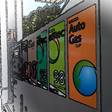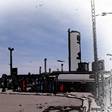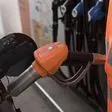
CNG Stations in Austria

Table of CNG Stations in Austria
| SUPPLIER | ADDRESS | CITY |
|---|---|---|
| ENI | Rheinstrasse 20 | Bregenz-Hard |
| BP | Reichenauer Straße 149 | Innsbruck |
| OMV | Hafenstraße 8 | Linz |
| AVIA | Keltenstrasse 2 | Sankt Pölten |
| OMV | Adalbert Stifter-Straße 67 | Wien |
| OMV | Straßganger Straße 436 | Graz |
| OMV | Klagenfurter Straße 16 | Wolfsberg |
| OMV | Völkermarkter Straße 272 | Klagenfurt |
| SHELL | Muenchner Bundesstrasse 137 | Salzburg |
| OMV | Maria-Gailer-Straße 53 | Villach |
| OMV | Bahnhofstraße 42 | Gmunden |
| ENI | Schwefel 70a | Dornbirn |
| RAG ERDGAS MOBIL | Krift 51 | Kremsmünster |
| EVM | Energiestraße 9 | Margarethen am Moos |
| AVIA | Fachmarktzentrum 1 | Siegendorf |
| ENI | Gesäusestraße | Liezen |
| ENI | Industriestraße 12 | Vomp |
| Autohof Huter GmbH | Stegen 7 | Vils |
| AVIA XPress | Gewerbeparkstraße 1 | Krems |
| OMV | Gewerbestrasse 8 | Loosdorf |
Map of CNG Stations in Austria
List of CNG Stations in Austria
Network of CNG stations in Austria
In Austria, Compressed Natural Gas (CNG) has been a viable alternative to conventional fuels for more than two decades. The country has invested significantly in developing CNG infrastructure, with a focus on sustainability and carbon emission reduction. This article presents an analysis of the current network of CNG stations in Austria, its historical evolution, a list of stations available in 2024, and projections for openings by 2025.
Evolution of CNG Stations in Austria
The history of Compressed Natural Gas (CNG) in Austria began with the opening of the first CNG filling station in 2001. Since then, the use of CNG has gained importance as a cleaner and more efficient alternative to traditional fuels such as gasoline and diesel. Over the past two decades, Austria has boosted the growth of its CNG station network, although development has been uneven in different regions.
By 2024, Austria has more than 170 CNG stations in operation. However, this number has remained relatively stable in recent years, due to increasing competition from other energy sources such as electricity and hydrogen.
Current List of CNG Stations in Austria
Here is a list of the main CNG stations distributed across the most important cities and regions in Austria:
- Vienna: 20 CNG service stations
- Graz: 15 CNG service stations
- Innsbruck: 10 CNG service stations
- Salzburg: 12 CNG service stations
- Linz: 8 CNG service stations
- Klagenfurt: 7 CNG service stations
CNG Stations Opening Projects and Forecasts for 2025
Despite the stabilization in the number of CNG stations in recent years, Austria plans a slight increase in its CNG infrastructure by 2025. This includes the opening of 10 new stations in key regions:
- Vienna: 3 additional stations are planned to be opened to improve coverage in peripheral areas.
- Graz: 2 new stations will be available near the A2 motorway.
- Salzburg: 2 additional stations are planned to be opened, aligned with the local policy of promoting alternative fuels.
- Linz and Innsbruck: Each city will see the opening of a new station in the vicinity of its industrial areas.
In addition, some older stations will be renovated to accommodate biogas demand and to offer a more efficient and environmentally friendly refueling experience
Largest CNG Station Operators in Austria
In Austria, several major operators dominate the CNG station market. The most prominent ones are listed below:
- OMV: The largest operator in Austria, with CNG stations across the country, especially in and around Vienna. OMV has plans to expand its station network to the west of the country in the coming years.
- Eni: This company operates several CNG stations in cities such as Graz and Linz, and is also exploring the possibility of introducing mobile stations for rural regions.
- BP: BP has strategic stations on major routes, including areas such as Innsbruck and Salzburg. Their plans for 2025 include the installation of mixed stations offering CNG and electricity.
The future of CNG in Austria will largely depend on the efforts of the government and energy companies to balance the transition to renewable energy and the existing CNG infrastructure. Forecasts for 2025 suggest modest growth in CNG stations, with a particular focus on modernizing current infrastructure and integrating clean technologies.
References
- https://www.energie.gv.at
- https://www.omv.com
- https://www.bp.com
- https://www.eni.com







